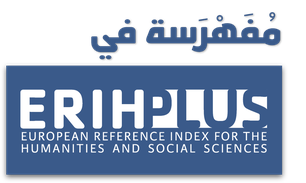Optimal Relevance in Interpreting and Translating Processes
DOI:
https://doi.org/10.63939/ajts.c5bkwq77الكلمات المفتاحية:
Relevance Theory، Optimality Theory، Pragmatics، Decision Theory، Translation Evaluationالملخص
This study investigates the types of difficulties faced by translators in achieving optimal interpretation. The relevance degree is adapted to achieve an optimal meaning when conveying the translated text. The text should be fully comprehensible without unneeded effort. To achieve this goal, the translator should understand the source text. Then, she or he recreates a translated text that is close to the original one, taking into consideration the intended audience and cultural norms. To apply it in the realm of optimality, the concepts of decision theory and utility theory are utilized. The study clarifies that the translator's selection of an utterance is based on relevance, as they aim to convey their intention and be understood. This in turn suggests that literal utterances take more effort to process than implied ones. For optimal relevance, the utterance should be the most relevant one, according to the readers' preferences and abilities. Finally, it is notable to mention that the study suggests developing and implementing this process of translation. As a result, it could significantly improve the translator's achievements in decoding any text appropriately.
التنزيلات
المراجع
Allott, N. (2013). Relevance theory. In Perspectives on linguistic pragmatics (pp. 57-98). Cham: Springer International Publishing DOI: https://doi.org/10.1007/978-3-319-01014-4_3
Ariel, M. (2002). The demise of a unique concept of literal meaning. Journal of Pragmatics, 34(4), 361-402 DOI: https://doi.org/10.1016/S0378-2166(01)00043-1
Atlas, J. D., & Levinson, S. C. (1981). It-clefts, informativeness and logical form: Radical pragmatics (revised standard version). In Radical pragmatics (pp. 1-62). Academic Press
Bai, L., & Chen, J. (2010). On Pragmatic Inference and Metaphor from the Perspective of Relevance Theory. Journal of Cambridge Studies
Bardzokas, V. (2012). Causality and connectives: From Grice to relevance. Amsterdam: John Benjamins DOI: https://doi.org/10.1075/pbns.216
Bataller, S. M. (2004). Lexical Pragmatics: Relevance Theory and Generalized Conversational Implicatures. Universitat de València
Benz, A. (2011). On bidirectional Optimality Theory for dynamic contexts. Bidirectional Optimality Theory, 180, 249 DOI: https://doi.org/10.1075/la.180.10ben
Blakemore, D. (1992). Understanding Utterances: An Introduction to Pragmatics. Oxford: Blackwell
Barsalou, L. W. (1983). Ad hoc categories. Memory & cognition, 11, 211-227 DOI: https://doi.org/10.3758/BF03196968
Blutner, R. (1998). Lexical pragmatics. Journal of semantics, 15(2), 115-162 DOI: https://doi.org/10.1093/jos/15.2.115
Blutner, R. (2004). Formal Pragmatics. In Optimality theory and pragmatics, ed. Y. Huang, R. Blutner, and H. Zeevat. New York: Palgrave Macmillan DOI: https://doi.org/10.1057/9780230501409
Blutner, R., & Zeevat, H. (2013). Pragmatics in Optimality Theory. Beyond words. Content, context, and inference, 33-58 DOI: https://doi.org/10.1515/9781614512776.33
Borg, E. (2008). Intention‐based semantics. In The Oxford Handbook of Philosophy of Language, ed. E. Lepore and B. C. Smith. New York: Oxford University Press DOI: https://doi.org/10.1093/oxfordhb/9780199552238.003.0012
Carston, R. (2004). Relevance theory and the saying/implicating distinction. The handbook of pragmatics, 633-656 DOI: https://doi.org/10.1002/9780470756959.ch28
Carston, R. (2013). Legal texts and canons of construction: A view from current pragmatic theory. Law and language: Current legal issues, 15, 8-33 DOI: https://doi.org/10.1093/acprof:oso/9780199673667.003.0010
Casacuberta, D., Figueras, C. and Martìnez, R. (1999). The R files: Applying relevance model to conspiracy theory fallacies. Journal of English Studies 1, p.45-55 DOI: https://doi.org/10.18172/jes.41
Chesterman, A. (1997). Memes of Translation. Amsterdam and Philadelphia: John Benjamins DOI: https://doi.org/10.1075/btl.22
Condorcet, J. A. N. D. C. (1874). Plan de constitution présenté a la Convention nationale, les 15 et 16 février. Oeuvres, vol. 12, pp. 333-415
De Hoop, H., & De Swart, H. (2000). Temporal adjunct clauses in Optimality Theory: 2621. Italian journal of linguistics, 12(1), 107-128
Franken, N. (1998). Communication in relevance theory. Revista alicantina de estudios ingleses, 11, pp. 59-74 DOI: https://doi.org/10.14198/raei.1998.11.06
Gordon, A. D. (2009). Communicating the gospel effectively using relevance theory and the corpus Christi festival: A case study in El-Tingo, Ecuador. PhD diss. Faculty of the School of Intercultural Studies
Grice, H. P. (1957). Meaning. The philosophical review, 66(3), 377-388 DOI: https://doi.org/10.2307/2182440
Grice, H. P. (1975). Logic and conversation. In Syntax and Semantics, 3: Speech Acts, ed. P. Cole and J. L. Morgan, 41-58. New York: Academic Press DOI: https://doi.org/10.1163/9789004368811_003
Hansson, Sven Ove (2015). Decision theory: A brief introduction. Royal Institute of Technology (KTH)
Haugh, M. (2002). The intuitive basis of implicature: relevance theoretic implicitness versus Gricean implying. Pragmatics. Quarterly Publication of the International Pragmatics Association (IPrA), 12(2), 117-134 DOI: https://doi.org/10.1075/prag.12.2.01hau
Hendriks, P., & De Hoop, H. (2001). Optimality theoretic semantics. Linguistics and philosophy, 24, 1-32 DOI: https://doi.org/10.1023/A:1005607111810
Huang, Y. (2007). Pragmatics. London: Oxford University Press
Huang, Y. (2012). Neo-Gricean Pragmatic theory of conversational implicature. In The Oxford Handbook of linguistic analysis, ed. B. Heine and H. Narrog. Oxford: New York DOI: https://doi.org/10.1093/oxfordhb/9780199544004.013.0024
Jaszczolt, K. M. (2010). Post-Gricean pragmatics. The Routledge Pragmatics Encyclopedia, 362-364
Jodłowiec, M. (2010). The role of relevance theory in SLA studies. Cognitive processing in second language acquisition, 49-66 DOI: https://doi.org/10.1075/celcr.13.06jod
Jucker, A. H., & Taavitsainen, I. (2000). Diachronic speech act analysis: Insults from flyting to flaming. Journal of Historical Pragmatics, 1(1), 67-95 DOI: https://doi.org/10.1075/jhp.1.1.07juc
Levinson, S. C. (2000). Presumptive meanings: The theory of generalized conversational implicature. MIT Press DOI: https://doi.org/10.7551/mitpress/5526.001.0001
Loukusa, S. (2007). The use of context in pragmatic language comprehension in normally developing children and children with Asperger syndrome/high-functioning autism: An application of relevance theory. Faculty of Humanities of the University of Oulu 106, (October)
Mason, I. (1994). Techniques of translation revisited: a text-linguistic review of ‘borrowing’and ‘modulation’. Estudis sobre la traducció. Castelló: Publicacions de la Universitat Jaume I, 61-72
Matsui, T. (2001). Experimental pragmatics: Towards testing relevance-based predictions about anaphoric bridging inferences. In International and Interdisciplinary Conference on Modeling and Using Context (pp. 248-260). Berlin, Heidelberg: Springer Berlin Heidelberg. DOI: https://doi.org/10.1007/3-540-44607-9_19
Mattausch, J. (2004). Optimality Theoretic pragmatics and binding phenomena. In Optimality theory and pragmatics (pp. 63-90). London: Palgrave Macmillan UK DOI: https://doi.org/10.1057/9780230501409_4
Moreno, A. L. (2003). The role of cohesive devices as textual constraints on relevance: A discourse-as-process view. International Journal of English Studies, 3(1), 111-166
Murtisari, E. T.(2013). Relevance-Based Framework for Explicitation/Implicitation: A New Alternative. Trans-Kom, 6 (2), 315-344
Potts, C. (2008). Formal pragmatics. The Routledge Encyclopedia of Pragmatics, 167-170
Prince, A., & Smolensky, P. (1993). Optimality Theory: Constraint interaction in generative grammar (Rutgers University Center for Cognitive Science Technical Report 2). Rutgers Optmality Archive Version, 8, 2002
Pattemore, S. (2004). The people of God in the Apocalypse: Discourse, structure and exegesis (Vol. 128). New York: Cambridge University Press DOI: https://doi.org/10.1017/CBO9780511488153
Pym, A. (1992). Translation and text transfer. Frankfurt: Peter Lang
Recanati, F. (1989). The pragmatics of what is said. Mind and Language 4, 295–329 DOI: https://doi.org/10.1111/j.1468-0017.1989.tb00258.x
Recanati, F. (1993). Direct Reference: From Language to Thought. Oxford: Blackwell
Sanz, M. J. P. (2013). Relevance Theory and political advertising. The European Journal of Humour Research, 1(2), 10-23 DOI: https://doi.org/10.7592/EJHR2013.1.2.jesuspinarsanz
Simms, K. (2009). Relevance theory. In key ideas in linguistics and the philosophy of language, ed. S. Chapman and C. Routledge, 193-199. Scotland: Edinburgh University Press DOI: https://doi.org/10.1515/9780748631421-070
Sperber, D., Cara, F., & Girotto, V. (1995). Relevance theory explains the selection task. Cognition, 57(1), 31-95 DOI: https://doi.org/10.1016/0010-0277(95)00666-M
Sperber, D., & Wilson, D. (1986). Relevance: Communication and cognition (Vol. 142). Cambridge, MA: Harvard University Press
Sytnyk, A. (2014). Argumentative euphemisms, political correctness and relevance. 2014. PhD Thesis. éditeur non identifié
Wilson, D., & Sperber, D. (1994). Outline of relevance theory. Links & Letters, (1), 085-106
Wilson, D., & Sperber, D. (2004). Relevance Theory. In L. R. Horn & G. Ward (eds.), The Handbook of Pragmatics. (Blackwell), 607-632
Wilson, J., & Rose, J. (1997). The Language of peace and conflict: Relevance theory and the Anglo-Irish agreement1. Journal of Conflict Studies, 17(2), 51-72
Van Rooy, R. (2004). Relevance and bidirectional optimality theory. In Optimality theory and pragmatics (pp. 173-210). London: Palgrave Macmillan UK DOI: https://doi.org/10.1057/9780230501409_8
Vidal, M. V. E., & Jungl, M. L. (2006). Remarks on optimality-theoretic pragmatics. In A pleasure of life in words: a festschrisft for Angela Downing (pp. 489-514). Facultad de Filología
Yi-bo, Y. A. N. (2015). Analysis of puns in English advertising language from the relevance theory. Sino-US English Teaching, 12(8), 602-607 DOI: https://doi.org/10.17265/1539-8072/2015.08.008
Zeevat, H. (2010). Optimal interpretation for rhetorical relations. Benz et al.(2010), 35-59 DOI: https://doi.org/10.1075/pbns.194.03zee
Zhonggang, S. (2006). A relevance theory perspective on translating the implicit information in literary texts. Journal of Translation, 2(2), 43-60 DOI: https://doi.org/10.54395/jot-xdhen
Zhou, F. Z. (2004). On plurality of translation. Beijing: China Translation and Publishing Corporation
التنزيلات
منشور
إصدار
القسم
الرخصة

هذا العمل مرخص بموجب Creative Commons Attribution-NonCommercial 4.0 International License.
يتأطرُ نَشَاطَا النشر والتوزيع الخَاصَّيْنِ بمقالات المجلة برخصة المشاع الإبداعي اللاتجارية والحافظة للنسب CC BY-NC 4.0، والتي تنص على الآتي:
- لك كقارئ أو زائر مُطْلَقُ الحرية في:
- المشاركة: نسخ وتوزيع ونقل العمل لأي مكان أو تحويله لأي شكل.
- التعديل:المزج، التحويل، والإضافة على العمل.
لا يمكن لنا كجهة مُرَخِّصَة إلغاء هذه الصلاحيات طالما اتبعتَ شروط الرخصة.
- يتوجب عليك في المقابل احترام الشروط التالية:
- نَسب المُصنَّف (المقالة):يجب عليك نَسب العمل لصاحبه بطريقة مناسبة، وتوفير رابط للترخيص، وبيانُ إذا ما قد أُجريت أي تعديلات على العمل. يُمْكِنُكَ القيام بهذا بأي طريقة مناسبة، ولكن على ألا يتم ذلك بطريقة توحي بأن المُؤَلِّف أو المُرَخِّص مُؤَيِّد لك أو لعملك.
- غير تجاري:لا يمكنك استخدام هذا العمل لأغراض تجارية.
- منع القيود الإضافية: يجب عليك ألا تُطَبِّقَ أي شروط قانونية أو تدابير تكنولوجية تقيد الآخرين من ممارسة الصلاحيات التي تَسْمَحُ بها الرخصة.












